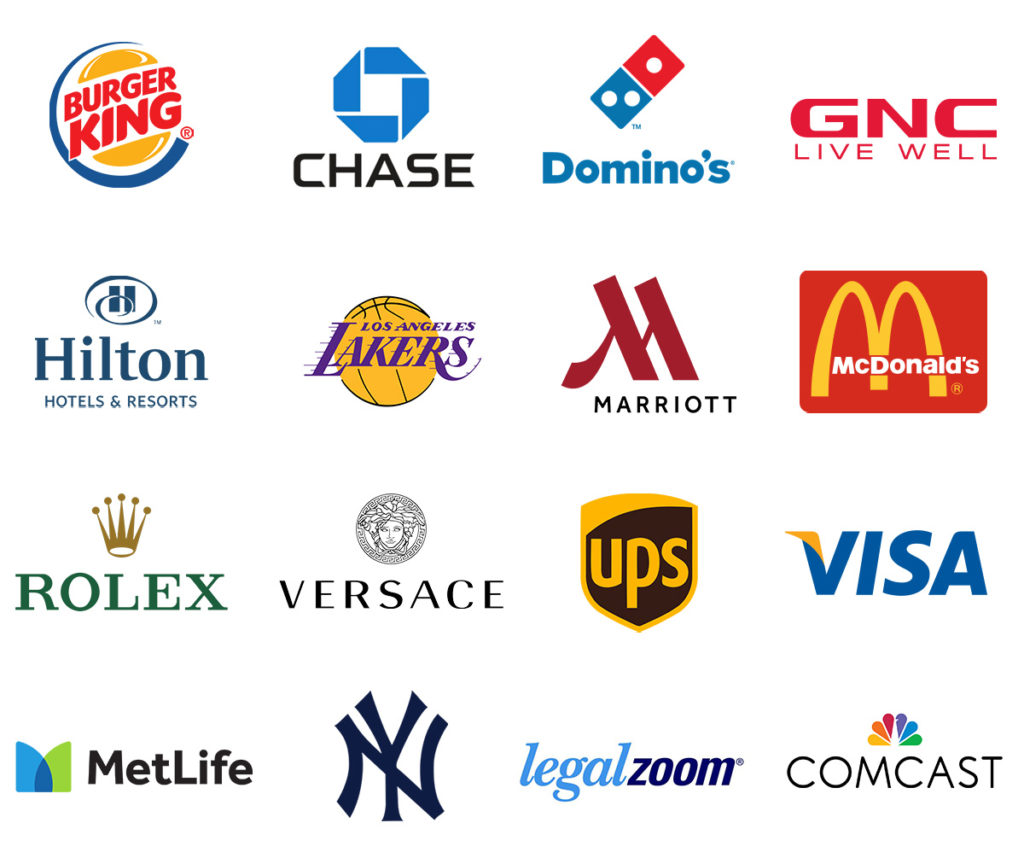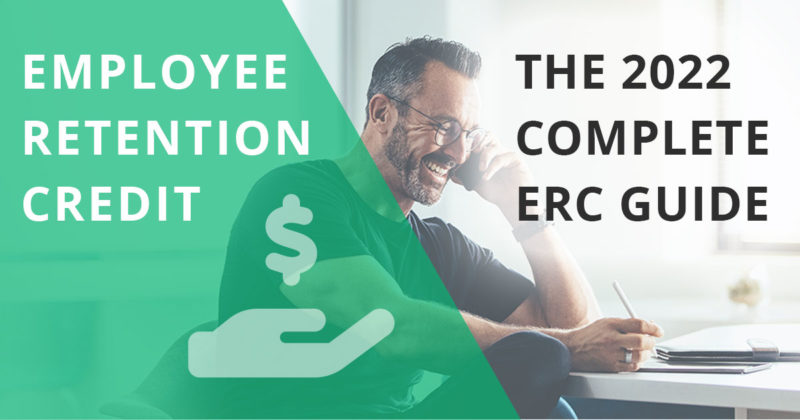The Employee Retention Credit also known as ERC or ERTC is a massive benefit for businesses and business owners. ERC is a Government Stimulus Program established by the CARES Act, and sponsored by the IRS. It was created to reward and give businesses grants who were able to retain their W2 employees during the Covid-19 Pandemic (2020 and 2021). We’ll explain more about the employee retention tax credit, and how your business can qualify for ERC.
But how does ERC work? And who is eligible to claim this employee retention tax credit? This article will walk you through everything you need to know about the Employee Retention Credit, and how you can get started right now.
2022 Employee Retention Credit Complete Guide to Getting ERC
If you’re a business owner with W2 employees, I strongly encourage you to find out if your business qualifies for the Employee Retention Credit – even if you’ve already been told that that your business doesn’t qualify for ERC.
Did you know that ERC stimulus program has been revised and amended over time? And in light of this, the qualifications for the employee retention tax credit have changed as well. Here’s the most important ones to know about:
- If you’ve already received PPP, you can still qualify for ERC.
- You can qualify for ERC by showing a decline in revenue during the pandemic.
- You can now also qualify for ERC by showing a change to your standard business operations. (We’ll discuss some examples later in this article)
Filing for ERC can be a very complex and time-staking process. It requires skills and expertise that most standard CPA’s and accountants do not posses. Therefore, I recommend working with a company or firm that specializes in ERC.
After vetting many companies, I highly recommend Bottom Lines Concepts. They handle the entire process for you and make it really easy for business owners to get their ERC. Best of all, they won’t take a dime until the money is in your account! They’ve filed ERC for over 16,000 businesses, and have recovered over $3 billion is ERC Tax Credits. All you need to do is schedule a quick 5 minutes call with one of their friendly expert ERC advisors to find out if your business qualifies for ERC
Here are some tips to get you started and better understand the ERC Stimulus program. Hopefully, these tips will help you maximize the benefits of the credit.
What is the Employee Retention Tax Credit?
The ERC Program is one of the most powerful and paramount government aid programs to ever exist for US businesses. The employee retention credit is a stimulus program for business established by the CARES Act, and sponsored by the IRS.
The goal of this program is to reward businesses who retained their W2 Payroll employees during the Covid-19 pandemic (2020 and 2021) and continued paying their Payroll Taxes. Because this was a very difficult time for our nation, the US government is basically saying “Thank you” to business owners.
Businesses who retained their W2 Payroll employees during the Covid-19 pandemic can receive up to $26,000 per employee. ERC is a refundable tax credit – a grant, not a loan – that businesses can claim through an ERC filing process.
Who Qualifies for the Employee Retention Credit?
The ERC program was created for small-medium businesses that have faced economic hardship or have have had to make changes in the standard business operations due to Covid-19 government mandates. Employers who showed a decline in revenue, changes or adjustments in standard business operations, or partial / full business suspension during the Covid-19 pandemic and continued to pay employees on W2 payroll during the years of 2020 and 2021.
Qualified wages are wages paid, including health care costs, to the employee whether or not the employee is performing services. The credit can be claimed on all qualified wages. Companies looking to claim the ERTC must report their total qualified wages, as well as the related health insurance costs, on their quarterly tax returns (Form 941 for most employers).
Is ERC like the PPP Loan?
No, The PPP is a loan program that provides funds to small businesses to help them keep their employees on the payroll. The ERC, on the other hand, is a tax credit that businesses can claim for eligible wages paid to employees during the pandemic and do not need to be repaid. Businesses who filed for PPP are also still eligible to receive ERC.
How Can My Business Qualify for ERC?
In order to receive the full benefit, a company must qualify for ERC in one of three ways:
- A decline in gross receipts, calculated on a quarterly basis – a 50% reduction in 2020 and/or a 20% decrease in 2021, compared to 2019
- A shutdown due to government order, which can be a full or partial shutdown – think physical space.
- A Government order caused more than a nominal effect – consider a modification of your business operations. Here’s some examples:
- Change in business hours
- Partial or full suspension of your operations
- Shutdowns of your supply chain or vendors
- Reduction in services offered
- Reduction in workforce or employee workloads
- A disruption in your business (division or department closures)
- Inability to visit a client’s job site
- Suppliers were unable to make deliveries of critical goods or materials
- Additional spacing requirements for employees and customers due to social distancing
- Change in job roles/functions
- Tasks or work that couldn’t be done from home or while transitioning to remote work conditions
- Lack of Travel or Lack of Group Meetings
How do I get my ERC Tax Credit
To claim the ERC tax credit, businesses must submit a prepared filing with the IRS. Businesses will need to provide basic information about their company and employees, as well as documentation showing that they have been impacted by the pandemic.
The IRS will then review the application and determine whether the business is eligible for the credit. If approved, the credit will be mailed to the business owner in form of a check. ERC can provide much-needed financial relief to those businesses who retained.
How to start the Employee Retention Credit 2022 application
To start the ERC credit, employers must file Form 941, Employer’s Quarterly Federal Tax Return. The credit can be claimed for each qualifying quarter from January 1, 2021, through June 30, 2021. For more information on how to start the employee retention credit 2022 application, visit the IRS website or reach out to an Employee Retention Credit service.

#1 Rated ERC Firm – Bottom Line Concepts
Bottom Line Concepts is the best company for any company or business to file for ERC. Through a detailed analyzation of 10 of the top ERC companies, bottom line concepts delivers the best experience from customer satisfaction to maximizing your ERC refund.
A Proven ERC Track Record for Businesses
Bottom Line Concepts a proven track record in assisting companies recover taxes and wages they have already paid on their W2 employees with zero upfront cost to the business. Their experienced, knowledgeable, and dedicated team will handle the entire process from beginning to end with the IRS on behalf of the business, and work closely with them to collect necessary documents and recover the most possible funds as quickly as possible.
The Entire ERC Process Handled for You
The team over at Bottom Line are truly experts in what they do – and they specialize in complex government tax and refund related filings precisely like the Employee Retention Credit. They have completed over 16,000 ERC filings, and recovered over $3 billion dollars in ERC tax credits. That’s no chump change. It takes a serious operation to be able to deliver on that, and they have proved themselves every step of the way.
Bottom Line Concepts has History and Rapport
Bottom Line Concepts is a division of Bottom Line Savings. Founded in 2009, Bottom Line Savings is a no risk, contingency-based cost savings company. They negotiate on behalf of their clients to get the best prices possible from their existing vendors. They audit old invoices for errors getting our clients refunds and credits, and they increase the profitability and overall valuation of their client’s organizations.
Bottom Line Savings primary client base was fortune 500 and fortune 1000 companies who produced over $100,000,000+ per year in revenue / sales. They focused their services on Government aid, unrealized funds, and specific cost-savings analysis.
Companies that Trust Bottom Line Concepts
Bottom Line Concepts clients include names like Starbucks, Visa Uber, McDonald’s, Rolex, the New York Yankees, the LA Lakers, Chase Bank, MetLife, Comcast GNC, Burger King, Versace… The list goes on.

Can I file ERC with My Accountant or CPA
Many businesses will ask “Why don’t I just file ERC with my CPA?” The answer is because of the complexity and expertise required to properly file for Employee Retention Tax Credit. Would you take karate lessons from a baseball coach? Same thing applies here. You want to work with a company that specializes in ERC, and has a proven track record of recovering funds for many businesses. For the record, simply because they may have filed your PPP for you does not mean they will be able to file your ERC. They are very different types of filing, paperwork, and calculations. PPP is a loan, meanwhile ERC is a grant.
The ERC is a complex 300 page stimulus plan that has been amended, revised, and changed over time. This requires your CPA to know every facet of how the ERC stimulus program has been updated. They also must posses the expertise to properly file for ERC and maximize your credit.
It’s simply a fact that many CPA’s and standard accountants do not have the experience or know-how in understanding how the program works, whether a business is eligible or what qualifies a business, and how to file for ERC. I cannot tell you how many time’s I’ve heard a business owner tell me that they don’t qualify because their accountant told them so. Sure enough, they ended up qualifying.
Important Facts about the ERC Stimulus Program
There are various factors than can affect the eligibility of ERC. Also, many businesses assume they do not qualify because of various assumptions. Here are some hard facts that will help:
- Even if companies received PPP, they still qualify for ERC.
- Even if your business did not have a revenue reduction or was deemed essential, they still qualify for ERC
- ERC is a refund in the form of a grant and can return up to $26,000/employee ($10,000 is the average for companies that received PPP, $20,000 is the average for businesses that didn’t)
- Simple operational impacts can qualify a business for ERC as well such as change in: job roles, business hours, reduction in services or workforce
- This stimulus program was established by the CARES Act, it is a refundable tax credit – a grant, not a loan – that your business can claim. The program is based on qualified wages and healthcare paid to employees.
- Businesses have until April 2024 to claim ERC retroactively for 2020, and until April 2025 to claim ERC retroactively for 2021. They have the ability to do a look back on their payroll during the pandemic and retroactively claim the credit by filing an amended tax return.
- For tax year 2021, the refundable tax credit is: 70% of qualified wages paid per employee (up to a maximum amount of $7000 per employee, per quarter and up to $21,000 for the entire year)
- For tax year 2020, the refundable tax credit is: 50% of qualified wages paid per employee (up to a maximum amount of $5000 per employee for the entire year)
- Independent contractors (1099) and the compensation paid to these individuals are not eligible for ERC
- Typical turn around times for funds to be collected from the ERC program is 3-6 months.
- To date, 84% of businesses have not filed for ERC, and most do not even know this program exists.
IRS Resources, Links and Articles pertaining to ERC
These articles will provide additional background on recent developments with the ERC program:





